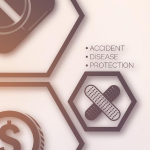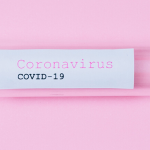On August 26, 2021, the Centers for Medicare and Medicaid Services (CMS) announced its proposed timeline for the national expansion of the Prior Authorization Model for Repetitive, Scheduled Non-Emergent Ambulance Transports (RSNAT). The formal notice appeared in the Federal Register on August 27, 2021.
Background
In December 2014, the Centers for Medicare and Medicaid Services (CMS) implemented a prior authorization model for payment of repetitive, scheduled non-emergent ambulance transportation. Under this Model, ambulance suppliers are required to seek and obtain prior authorization for the transportation of repetitive patients beyond the third round-trip in a 30-day period. Absent prior authorization, the Medicare Administrative Contractors (MACs) are required to subject further claims to prepayment review.
The Model was initially implemented in three states: New Jersey, Pennsylvania, and South Carolina. These “Year 1” states were selected based on relatively high per-capita expenditures on RSNAT. The Model was subsequently expanded in January 2016 to five additional states (Delaware, Maryland, North Carolina, Virginia, and West Virginia) and to District of Columbia. These “Year 2” states were selected based on their inclusion in the same MAC Jurisdiction as one or more of the Year 1 states.
The purpose of the RSNAT Model was to test whether prior authorization would be effective in reducing Medicare expenditures on RSNAT, without adversely impacting beneficiary access to medically necessary services. CMS engaged Mathematica, a public health care research firm, to study the impact of prior authorization on ambulance utilization in the demonstration states. Mathematica issued several reports that concluded that the Model was effective in reducing Medicare expenditures without any measurable impact on the quality of care available to Medicare beneficiaries.
On November 23, 2020, CMS published a notice in the Federal Register indicating that it intended to expand the Prior Authorization Model to all remaining states and U.S. territories. However, citing the current Public Health Emergency, CMS elected not to set a timeline for that national expansion.
The current notice announces that timeline for national expansion
Expansion Timeline
CMS has indicated that the RSNAT Model will be expanded into new states on the following timeline:
| Expansion Date |
Affected States |
| December 1, 2021 |
Arkansas, Colorado, Louisiana, Mississippi, New Mexico, Oklahoma, and Texas |
| Not earlier than
February 1, 2022 |
Alabama, California, Georgia, Hawaii, Nevada, Tennessee, American Samoa, Guam, and the Northern Mariana Islands |
| Not earlier than
April 1, 2022 |
Florida, Illinois, Iowa, Kansas, Minnesota, Missouri, Nebraska, Wisconsin, Puerto Rico, and the U.S. Virgin Islands |
| Not earlier than
June 1, 2022 |
Connecticut, Indiana, Maine, Massachusetts, Michigan, New Hampshire, New York, Rhode Island, and Vermont |
| Not earlier than
August 1, 2022 |
Alaska, Arizona, Idaho, Kentucky, Montana, North Dakota, Ohio, Oregon, South Dakota, Utah, Washington, and Wyoming |
An analysis of the proposed timeline suggests that CMS has elected to expand the RSNAT Model based on existing Medicare Administrative Contractor (MAC) Jurisdictions. For example, each of the states slated to be included in the December 1, 2021 expansion fall within MAC Jurisdiction H. This MAC Jurisdiction is administered by Novitas Solutions, Inc. Novitas also administers MAC Jurisdiction L, which has been operating under the RSNAT Model since 2014. Thus, CMS likely selected MAC Jurisdiction H for the first stage of the national expansion due to Novitas’ experience in administering the RSNAT Model.
The second stage of the national expansion will occur no earlier than February 1, 2022. This stage will include all states and territories located in MAC Jurisdiction J and MAC Jurisdiction E. MAC Jurisdiction J is administered by Palmetto GBA, LLC, which has been administering the RSNAT Model in MAC Jurisdiction M since 2014. MAC Jurisdiction E is administered by Noridian Healthcare Solutions, LLC. This will be Noridian’s first experience with the RSNAT Model.
The third stage of the national expansion will occur no earlier than April 1, 2022. This stage will include all states and territories located in MAC Jurisdiction 5 (Wisconsin Physicians Service Government Health Administrators), MAC Jurisdiction 6 (National Government Services, Inc.), and MAC Jurisdiction N (First Coast Service Options, Inc.)
The fourth stage of the national expansion will occur no earlier than June 1, 2022. This stage will include all states and territories located in MAC Jurisdiction 8 (Wisconsin Physicians Service Government Health Administrators) and MAC Jurisdiction K (National Government Services, Inc.).
The final stage of the will occur no earlier than August 1, 2022. This stage will include all states and territories located in MAC Jurisdiction 15 (CGS Administrators, LLC) and MAC Jurisdiction F (Noridian Healthcare Solutions, LLC).
Outreach and Education
With the formal announcement of CMS’ timeline for the national expansion of the RSNAT Model, the American Ambulance Association will be increasing its educational efforts related to prior authorization. This will include webinars and other educational materials on the technical elements of the prior authorization process, the importance of third-party documentation, as well as basic best practices related to the transportation of repetitive patients. We encourage all members that may be impacted by the expansion of prior authorization to take advantage of these educational materials.















